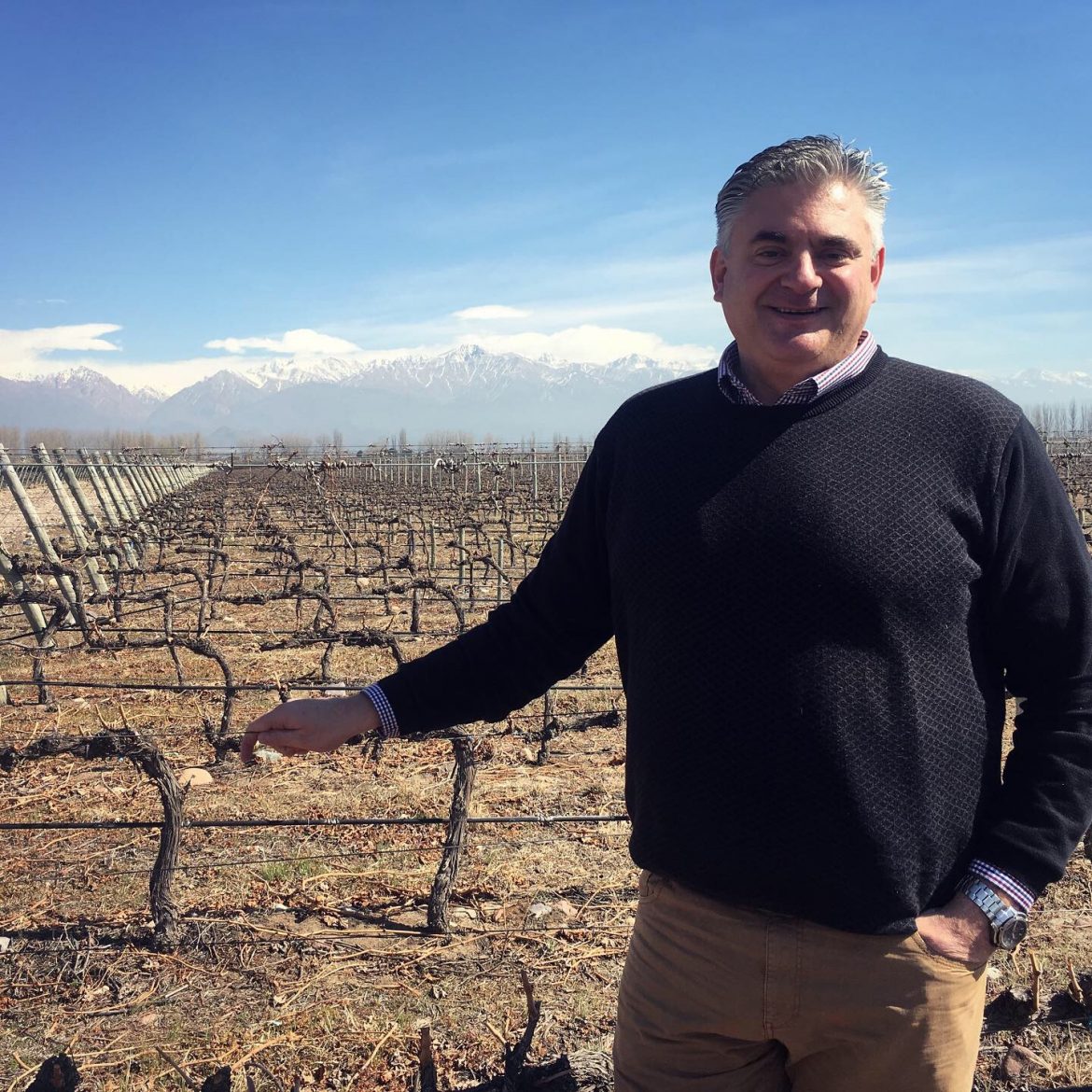Los Chacayes IG in the Uco Valley is one of the newest appellations to be formed in Argentina, while San Rafael was, in fact, one of Argentina’s first denominations of origin. Although the two terroirs are separated by over 150 km in distance, Bodegas Bianchi has wineries and large vineyards in each. Amanda Barnes interviews Bianchi winemaker Silvio Alberto about both terroirs and the why he believes that Los Chacayes IG and San Rafael are equally capable of making excellent Malbec wines, but of a very different style.
They also discuss the potential of Cabernet Franc in Argentina and Silvio reflects on his experience as one of the first Argentine winemakers to release a single-varietal premium Cabernet Franc (with Andeluna winery in 2003) that helped contribute to the current boom in the variety in Argentina.
A tale of two terroirs: San Rafael and Los Chacayes IG
Interview with Silvio Alberto of Bodegas Bianchi
Amanda Barnes: Can you tell us about Los Chacayes IG (Geographical Indication) and why it has been set up as a special sector of the Uco Valley?
Silvio Alberto: The Uco Valley, and Los Chacayes in particular, is for me one of the best areas in Argentina for making excellent wine because of some of the different characteristics here.
Firstly, this is a big place with a lot of rocks. The origin of the soils is alluvial and the grapes take on a mineral component which shows in the wines as very fresh and with a lot of fruit.
The other important characteristic is the altitude of Los Chacayes, which is at more or less 1,200 metres above sea level. At this altitude you can obtain very good temperatures during the day and night, with a very big difference in temperature between them – approximately 10˚C to 15˚C difference in temperature. You get very good phenolic maturation with regards to colour and tannin, but also aromatically.
AB: How does Malbec from Los Chacayes compare with Malbec from San Rafael?
SA: If you compare Los Chacayes with San Rafael, the difference is incredible. Both San Rafael and the Uco Valley are great terroirs for our icon wines, but in San Rafael, you can obtain a wine that, just after alcohol fermentation, has an excellent mid-palate. It is big with sweet tannins; it’s incredible.
If you compare that with the wine from Los Chacayes, the wine from Los Chacayes is more nervous, with more tannin and ‘salvaje’…
AB: Wild?
SA: Wild! Los Chacayes is in fact named after a fox, Los Chacayes, which we find in the wild.
AB: What differences do you find in making Malbec from Los Chacayes versus San Rafael?
SA: You need to work more with the wines from Los Chacayes in the Uco Valley, because you obtain more tannin. The wines are much longer but you need to work throughout the year in the barrel with batonnage and with the lees to obtain more volume and more of that mid-palate.
But in San Rafael you get the mid-palate as soon as it finishes the alcoholic fermentation. You need to pay more attention to the wine from Los Chacayes, but sincerely, the quality when you finish all of the processes; the result is excellent.
AB: You are very well known for working with Cabernet Franc in the Uco Valley, and made Argentina’s first super-premium Cabernet Franc back in 2003. Why do you think Cabernet Franc has such an affinity with the Uco Valley?
SA: I am a fanatic of Cabernet Franc because it is totally different to Cabernet Sauvignon! It has different aromas and the tannins are very sweet, and it has great potential for ageing. I remember I opened a bottle of the 2003 Cabernet Franc one month ago and the evolution is incredible.
The Uco Valley and Cabernet Franc are excellent partners, Cabernet Franc here has the best conditions to grow with sweet tannins under this perfect sun. You need to protect the grapes a little bit from the sun, because you need to protect the aromas of the Cabernet Franc, but the tannins are very sweet, and you have good ageing potential and very good structure.
Argentina is obviously Malbec for now – it is our first and most important variety -but Cabernet Franc has an excellent future in Argentina.
A taste of Bianchi wines
Bianchi Gran Familia Corte 2017
This blend comes from their Los Chacayes vineyard with 59% Malbec, 23% Petit Verdot, 11% Merlot, 4% Cabernet Sauvignon and a smidgen of Tannat. Dark with wild herbal notes, this is a taut wine with spicy tannins and a slightly ashy finish.
Bianchi Particular Malbec 2017
Coming from San Rafael, this Malbec is from old vines in their Asti vineyard, which has sandy soil with some pebbles. The wine has juicy red fruit aromas with pink peppercorn spice, and sweet and ripe tannins on entry, with a smooth and aromatic finish.
Bianchi Particular Cabernet Sauvignon 2017
This is a very distinctive Cabernet Sauvignon and Silvio feels that the potential of Cabernet in San Rafael is quite unexplored and certainly underrated. On the nose there is sweet spice, roasted red pepper and citrus peel. Feminine and silky.
Bianchi Enzo Blend 2017
Bianchi’s first icon wine, made from old vines in San Rafael. A well-integrated blend of Cabernet Sauvignon (41%), Malbec (35%), Merlot (15%) and Petit Verdot (9%), which are blended before being aged in oak. This is a deep wine with rich concentration and lovely perfume adding a different dimension. There’s fruit, spice and fine-grained, silky tannins. Delicious.
Bianchi Premium Extra Brut 2011
Bianchi is well-known for its good value bubbles, but this is the crème de la crème of their sparkling wine portfolio and an accomplished traditional method bubbly. A blend of Chardonnay and Pinot Noir from San Rafael, this wine has spent seven years on the lees and displays toasty notes of pastry and stewed apple. Mouthfilling bubbles with a fresh and creamy finish.
